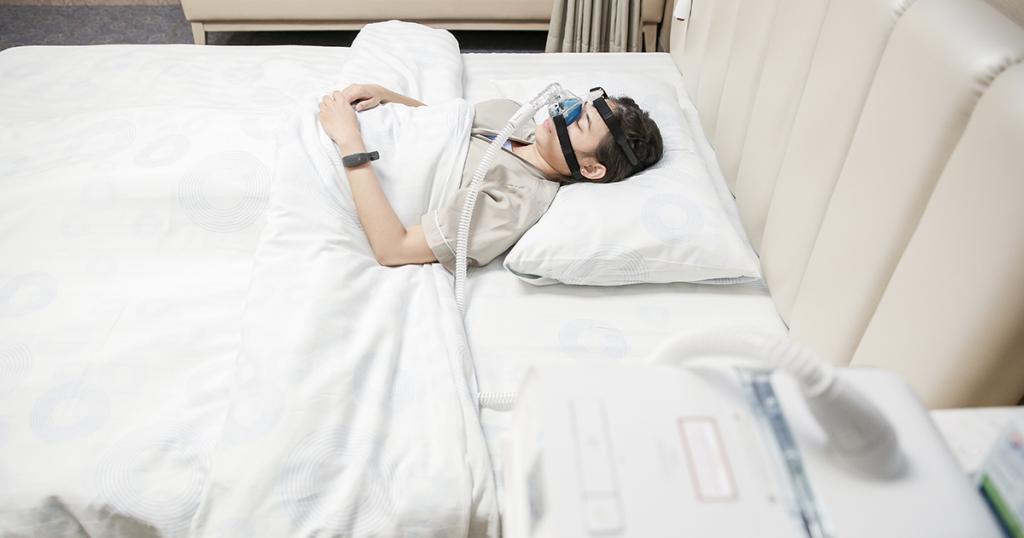It is often found that many people neglect or overlook abnormal health symptoms they are experiencing – for example, snoring, sleep apnea, prolonged sleepiness, and epileptic seizures – until an ailment leads to dementia, when the suffers’ memories begin to fade. Actually, our body may have been sending us frequent warnings already.
Snoring
Snoring, sleep apnea, prolonged sleepiness, and epileptic seizures are conditions that should not be overlooked because they can lead to some severe illnesses. From medical data, it is found that there are 400 – 500 patients every year who consult their doctors about various sleep disorders. Majority of the patients consists of people 35 years old and above. Most of them suffer from snoring, which affects more men than women. In general, the problem is due to obesity, being overweight, hereditary, and the patient’s lifestyle – cigarettes smoking and alcohol drinking – all of which cause the throat muscles to sag. This, together with the certain facial structures and shortened neck, results in the narrowing of upper respiratory tract. During a deep sleep, the sagging throat muscles will cause the air passageway to be constricted. Consequently, insufficient amount oxygen is fed to the brain, and the patient keeps waking up frequently during sleep. Without proper treatment this condition can lead to the risks of high blood pressure, diabetes, heart and brain diseases that can cause memory deterioration.
As for treatments, in the case of snoring, a CPAP machine can be used to blow air into the passageway to unblock it. This will also help address the sleep apnea condition. New patients may find the machine somewhat uncomfortable to use and will need additional training for it. In cases of sleep-talking, restless leg syndrome, or narcolepsy, medication can be used to prompt awareness. This can be prescribed along with adjustments to the patient’s habits and sleep schedule. Patients in this group consist of 6 – 12 years old children as well as working adults. For some, the conditions are hereditary but, for others, the cause may be unknown.

Epilepsy
Epilepsy cases are found in about 1% of the population. Data have shown that there are at least 6 or 7 hundred thousand to 1 million people in Thailand suffering from this malady with an increasing trend. Particularly in the elderly group where this ailment usually comes with dementia. In addition, the chances of epileptic seizures, or problems with electrical activity in the brain, increase with cerebral atrophy. Many incorrectly think that seizures are in the form of uncontrollable convulsion. In fact, common occurrences are confusion, patchy memory, and auditory hallucination. Importantly, the danger that comes with the seizures includes memory loss, as well as diminishing movements and balance along with the brain’s ability to function. If the symptoms persist, they can lead to some types of mental disorder also.
There are 4 categories of epilectic seizures, which are:
- Focal seizures
- Generalized seizures
- Focal mixed with generalized seizures
- Seizure that canot be localized
Moreover, there are additional subcategories of epileptic seizures because their cause varies. As a matter of fact, these seizures can attack any one even if the person has never experienced them before: something like sleep deprivation can be the trigger. Partial of the seizure causes are:
- Congenital disorder of the cortical convolutions
- Hereditary
- Traces of other illnesses such as brain activity disorder, and aortic aneurysm
- Tumor
- Lymphatic diseases or brain fever due to virus infection
- Dementia due to advanced age
- Accident

Depending on the category of epileptic seizures, treatments can be medication, surgery, or electrical stimulation. Your doctor will prescribe the treatment according to the symptoms and cause of the seizures. 70% of the patients respond well to medication and keep the seizures under control, but patients must take the medicines for 3 – 5 years. So, they must be persistent about it, while also obtaining sufficient sleep nightly and remaining stress-free. However, in cases where the patient has resistance to the drugs and the symptoms do not improve after medication, a surgery is recommended from an early age so as to not waste any time. This is because living with seizures for many years can damage your brain. Therefore, the sooner you consult a doctor, the better.
Today, there are various technologies that can be utilized to diagnose epilepsy before a surgery. In contrast to procedures to treat patients from accidents, burst blood vessels or stroke where cerebral artery has been partially damaged, a surgery for epileptic seizures has a chance of a complete cure or, at lease, to lessen the symptoms. If it is determined that there is no risk to the surgery, it possible to use electrical stimulation instead and, in the future, a laser can be used to perform the surgery as needed.
This article highlights the importance of a sleep study to diagnose and determine the severity of sleep disorders. The study consists of measuring electrical activities of the brain, heart, muscles below the chin and legs. It also records eye movements, blood oxygen level, breathing through mouth and nose, together with the capabilities of the chest and abdominal muscles in the respiratory function. At Bangkok International Hospital, such a study is conducted inside our Neuroscience Center where we are well equipped to help sleep disorders and epileptic patients of any age and gender.
Importantly, it is not enough to diagnose epileptic conditions and prescribe medication only. To be effective, it is necessary to determine the type of seizures and, with the use of modern technology, pinpoint the location where the issue occurs. This requires close monitoring of the patients for 24 hours or more. Then, ulitilizing EEG fMRI as well as PET SCAN, the neurological surgeon will be able to more accurately identify the target location for the treatment.